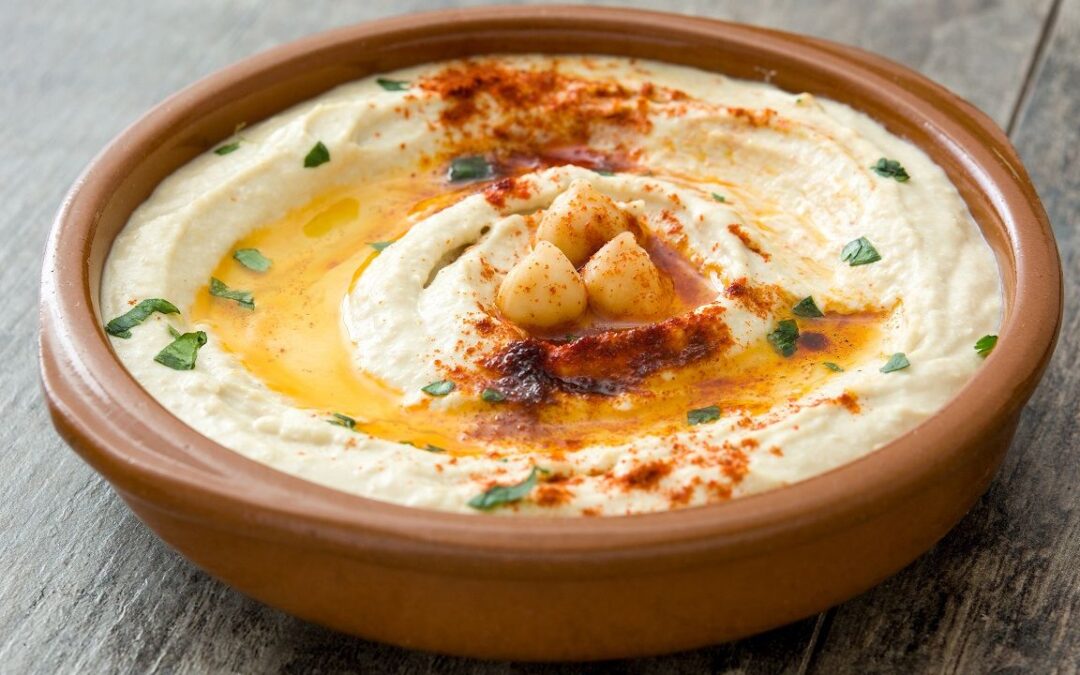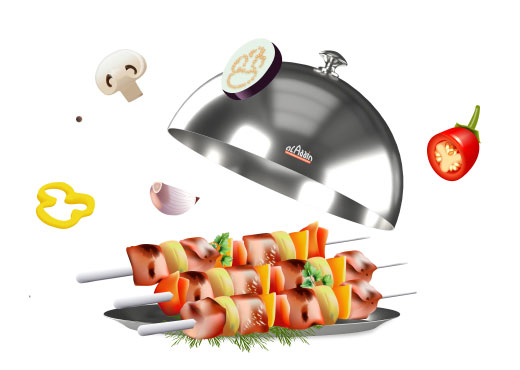Creamy hummus is a Middle Eastern dip that has become popular across the globe. It comprises cooked chickpeas, fresh lemon juice, garlic, olive oil, tahini, and salt for a mixture that is nutty, tangy and bright, and garlicky. While hummus is incredibly easy to make at home, many struggle with getting that perfectly smooth and creamy texture. Here is the secret to creamy, dreamy hummus every time.
The Ingredients in Hummus
The ingredients for a basic hummus are very simple. All you will need is a combination of cooked chickpeas (otherwise known as garbanzo beans), fresh garlic, tangy lemon juice, good-quality olive oil, tahini sesame seed paste, and salt. Sometimes, hummus will include a garnish of some paprika and finely chopped parsley for some color as well.
Generally, hummus is served at room temperature or warm rather than chilled, but it is delicious served either way. Traditionally, it will be served with some pita bread for dipping but it is also wonderful with an array of crackers. You could also serve it with a mixture of fresh vegetables such as sliced cucumber, grape tomatoes, broccoli florets, sliced bell peppers, carrot sticks, and more.
The Secret to Making Creamy Hummus
No one likes coarse-textured hummus from under-blended chickpeas. While a blender or food processor helps hummus become creamy, people may find challenges achieving a perfect, velvety texture using those appliances alone. The secret, however, is using plenty of tahini, which is a sesame seed paste that includes lots of fat and will help the chickpeas blend into the most beautiful, velvety texture – resulting in delicious creamy hummus.
Once you have blended your hummus, you can add additional tahini if needed, and continue blending the mixture until you have your ideal, creamy, dreamy hummus. Generally, a couple tablespoons of hummus will not be enough. You should aim to add upwards of a ½ cup of tahini for each can of chickpeas you use for making hummus.
Some people advocate for removing the skins from the chickpeas, but it isn’t necessary if you use a high-powered blender. However, if you choose to make your hummus by hand with a mortar and pestle, you may find it beneficial to remove the chickpea skins. Simply rub the chickpeas in your hands to remove the skins. This may be time-consuming to do but the skins should be easy to remove from already-cooked chickpeas.
How to Make Creamy Hummus at Home
The best equipment for making creamy hummus at home is either an upright blender or food processor, but you could use a sticker blender as well. All you have to do is combine the chickpeas, lemon juice, garlic, tahini, and salt in a blender, and pulse the mixture until it is smooth. Sometimes, you may have to add a little more olive oil, or even a little water, to help the mixture become smooth. A little extra olive oil or water can also help loosen the consistency of the hummus if it is a little too thick for your taste.
It is best to taste the mixture once you have blended it to determine if it needs anything adjusted. If you find it could use more brightness, simply add an extra squeeze of lemon, or add more salt if the mixture is a little unseasoned. You could also increase the garlic is you prefer your hummus to have a stronger garlic taste.
Once the mixture is blended, simply add it to a serving dish, and garnish it with a few whole chickpeas and a sprinkling of chopped parsley and paprika. It is also traditional to drizzle a little extra-virgin olive oil on top. The hummus is wonderful served straight away. Simply include a plate of pita bread, crackers, and/or veggies, and you will be good to go!
How to Serve Hummus
At its most basic, you can serve the hummus in a bowl along with pita bread, crackers, or fresh vegetables for dipping. However, you can take it up a notch by topping it with whole chickpeas, paprika, parsley, and more olive oil as well.
Hummus is excellent served in other ways as well. Here are some additional ideas for how you could serve it:
Make Chicken Hummus Wraps: Consider adding it to wraps with chicken, greens, bell peppers, and roasted pepper jelly. This flavor combination is so delicious with the nuttiness of the hummus and the sweetness of the jelly.
Use it in Tuna Salad: If you are looking for a dairy-free replacement to mayonnaise for your tuna salad, you can add tahini to the tuna instead. This will add extra healthy fibre to your lunch while building in creamy, garlicky, and lemony flavor into the tuna salad.
Use it in Salad Dressings: If you have a lot of hummus on hand and are unsure of how to use it up, you can mix some with extra olive oil, apple cider vinegar or white vinegar, liquid honey, and salt and pepper to create a loose, fluid salad dressing. Feel free to add a few chopped herbs like chives, parsley, cilantro, or dill to the dressing as well.
Make Crostini: To change up how you serve your hummus, simply toast slices of baguette until golden and crunchy, and spready them with hummus. Then, you can garnish the toasts with whatever garnishes you like such as crumbled feta, olives, roasted red peppers, microgreens, and more.
FAQ
Where did hummus come from?
Hummus has origins in the Middle East, particularly the country of Syria. However, today, several cultures across the Middle East have claimed it, and it has even become a staple in Western households.
What is the best hummus?
The best hummus is one that is creamy and full-flavored, with the right balance of garlic, tahini, salt, and lemon. By ensuring that you include lots of tahini in your hummus, you will ensure the creamiest hummus you have ever had.
Is hummus a healthy food?
Hummus is a very healthy food with plenty of fibre which is beneficial for good gut health. Moreover, it contains many health fats from olive oil and tahini, and vitamin C from the lemon. If you are searching for a healthy food to have for lunches or snacks through the week, hummus is a perfect option.
What’s the secret to making hummus extra creamy?
The key to ultra-creamy hummus is to start by peeling your chickpeas, which removes the outer skins that can create a gritty texture. Additionally, blending the hummus for several minutes in a high-powered food processor or blender can ensure a smooth consistency. Adding a bit of ice water while blending can also help to whip the hummus into a lighter, creamier texture.
Can I make creamy hummus without tahini?
Yes, you can make hummus without tahini if you prefer or have an allergy. While tahini adds a distinctive flavor and creaminess to hummus, you can substitute it with other ingredients such as Greek yogurt or a nut butter to maintain the creamy texture. Keep in mind that the flavor profile will change slightly with different substitutions.
Aladdin Houston: Lebanese Hummus Perfection
Aladdin Houston elevates Lebanese-style creamy hummus to an art form, renowned for its silky texture and harmonious flavor. By adhering to traditional recipes and selecting premium ingredients, Aladdin offers an authentic taste experience. Here, hummus isn’t just a dish; it’s a celebration of Lebanese culinary excellence, making Aladdin Houston the go-to destination for the finest hummus in the city.
Conclusion: The Essence of Creamy Hummus
The journey of creamy hummus brings us from its humble beginnings to a beloved global staple, embodying simplicity, nutrition, and versatility. Perfecting hummus is an art that balances texture and flavor, inviting both novices and connoisseurs to explore its creamy depths. Let’s turn our focus to a place where this art is mastered daily.


